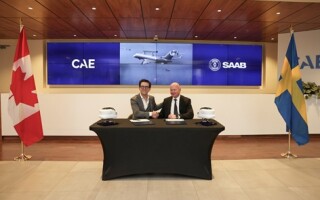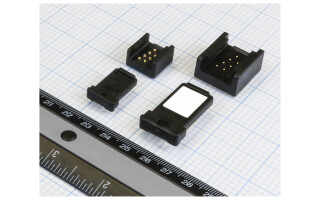Old space computers, current podcasts, and new staff
StoryJuly 29, 2019
This summer, two events celebrate 50th anniversaries – one is significant to the whole world, while the other likely only to two 75-year-olds in Florida. Eight days from this writing, it will be July 20, 2019, marking 50 years since Apollo 11 astronauts Neil Armstrong and Buzz Aldrin landed and walked on the moon. Less than two months after that momentous date, I turn 50. You can guess which one my parents find more important. Both Aldrin and Armstrong are in the Astronaut Hall of Fame down at Cape Canaveral, while I’m in the “Shoulda, Coulda, Woulda” exhibit. Kidding, of course: That exhibit doesn’t exist … yet.
Sadly, we lost Armstrong a few years ago, but Aldrin is just short of 90 and going strong, with a healthy Twitter account.
Not all of the technology from those days can boast the same. However, some computer technicians have brought back to life an Apollo lunar lander computer that been in the possession of private collector Jimmie Loocke for years.
Volunteer computer technicians repaired and brought back to life Loocke’s computer, according to a Wall Street Journal article titled “An Apollo Spacecraft Computer is Brought to Back to Life,” by Robert Lee Hotz: “Eldon Hall, the digital-computing pioneer who led the team that designed the computer at the MIT Instrumentation Laboratory, verified the unit’s authenticity in 2004. It had been used for ground tests, he says, to certify the lunar lander as safe for human flight.”
Hotz writes that it was Hall who pushed for the use of integrated circuits (ICs) to help create computers small, rugged, and powerful enough to get the astronauts safely to the moon.
Reducing size, while maintaining ruggedness and improving performance … sounds like a familiar problem.
According to Hotz, the team of volunteers called themselves “computer archeologists … [and] … labored on their own time without NASA’s official sanction or support.”
On their first look they found the “machine’s semiconductor chips still looked new, the power supply was functional, [and] the 4,000 interconnecting wires gleamed, untarnished,” Hotz reports. However, problems obviously existed as the archaeologists also had to deal with “circuit faults, corroded connectors, and scrambled signals.”
Interestingly, they were able to replace a couple faulty diodes by heading to a local repair shop as the parts were still available even after fifty years – “sold in bags of 15 for a dollar.”
Some things never become obsolete.
Finally, after nearly two weeks, the team tested the refurbished machine by loading “a rare Apollo memory module” from a museum. After powering up the machine, the team saw an activity light go on and “for the first time in 50 years, the computer ran its original software – a program called Retread that was a set of diagnostic routines used to test computer operations.”
Other nuggets from the Journal article included that NASA purchased some 60% of all ICs “produced in the U.S. between 1962 and 1967” and that the first computer chips that MIT tested cost $1,000 each, dropping to $15 apiece by the time of the moon landing.
To read the whole story, visit https://www.wsj.com/articles/an-apollo-spacecraft-computer-is-brought-back-to-life-11563152761. Also, be sure to check out the Journal’s complete coverage of the moon landing anniversary. They’ve done nice work.
For more on the electronics space applications, please listen to The New Space Race podcast series I’m hosting. I interview experts from Cobham, Curtiss-Wright Defense Solutions, Harris Corp, and Wind River on topics that include changing reliability requirements, open architecture initiatives, and the use of commercial off-the-shelf (COTS) in space. The series is sponsored by Wind River and be found at https://www.windriver.com/events/the-new-space-race/.
Podcasts are fun and I’m quite enjoying them, not only the work on the space series but also the chats I’m having on my McHale Report podcasts, including recent ones on the F-35 avionics with Bryant Henson, vice president and general manager with Harris Corp., and on the military unmanned aircraft market with Mike Blades, VP of Research and Consulting with Frost & Sullivan. You can find the McHale Report podcasts at http://mil-embedded.com/category/podcast/.
In a short time, I expect our new Associate Editor Emma Helfrich to join me in hosting podcasts. Helfrich, who joined us last month, is a graduate of Northern Arizona University in Flagstaff, Arizona, where she was the copy chief for the school’s newspaper, The Lumberjack.
Based in our Scottsdale, Arizona headquarters, Helfrich will be covering all topics, with a particular focus on artificial intelligence and cyber defense. She penned her first feature on trends in rugged displays, which you can read on page 18.
Helfrich is a talented writer and editor and we’re excited to have her on board. She can be reached at emma.helfrich@opensysmedia.com.





